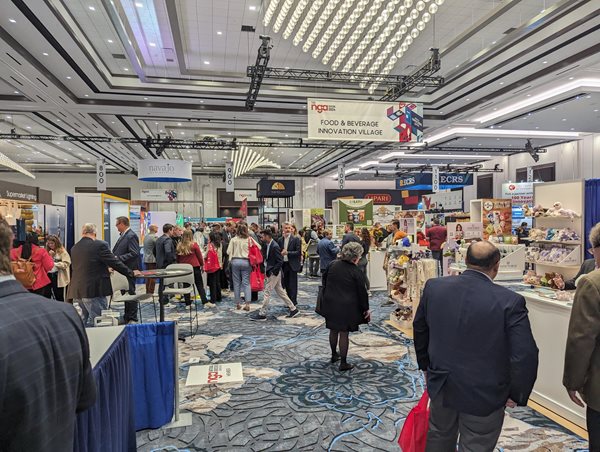Retail Levers: Which to Pull?

Shopper insights consultant Todd Hale discussed the top issues driving growth in the food channel during the session “U.S. Retail Hot Buttons: Driving Change and Growth in Retail” at the NGA Show, Monday.
“GDP growth has been solid, and that’s translated into the fact that consumer confidence has been fairly steady for the last year or so,” said Hale, citing NielsenIQ data. “Many consumers feel good about themselves but given the inflationary pressures a lot of others face, many don’t feel good about their position in the marketplace today.”
Hale identified the following “retail hot buttons” that retailers should consider when drafting or revising their business plan:
• Price and value: driving affordability across income levels
• Private brands: these offerings are gaining dollar share across the store
• Right-sized box: ensuring the retailer’s size best serves the business and community
• Food fight: evaluating whether to invest in on-sight food consumption
• Connecting with shoppers that matter: merchandising items that appeal to a more diverse consumer base
• Digital shopping and digital retailing: finding ways to leverage ecommerce or subscription models for the store experience
• Automation: considering where technology can work in tandem with employees to create a better shopping experience
• Health and wellness: consumers care about products that make claims to support social, environmental, and personal well-being
He noted that while low- and high-income shoppers are attracted to conventional grocers, there are many discrepancies when evaluating across formats. He said that low-income shoppers tend to gravitate toward dollar stores and convenience stores, and higher-income shoppers are more likely to shop at drug stores, club stores, and mass retailers. These differences persist across other metrics too. For example, a basket size in dollars per trip is typically lower for low-income shoppers; however, they take more trips to the store than their high-income counterparts.
Despite the differences, price and value reign king: “Poor people need low prices, rich people love low prices,” said Hale.
He also remarked upon the growing success of “no-frills” formats like Joe V’s SmartShop from H-E-B, Wakefern's Price Rite, and Kroger's Ruler Foods which are value-forward offshoots of traditional retailers, as well as Walmart’s recent attempt to appeal to shoppers with a more upscale format that uses new designs and store features.
“Walmart is trying to get inflation-wary shoppers to buy higher-margin merchandise, such as makeup and apparel,” he said.
Value underlined many other retail hot buttons, including digital shopping. One of the key aspects larger retailers continue to invest in is the subscription model, said Hale.
“I don’t know how many households can afford to do more than one of these,” he said. “It will be interesting to see how this plays out in the long term.”
